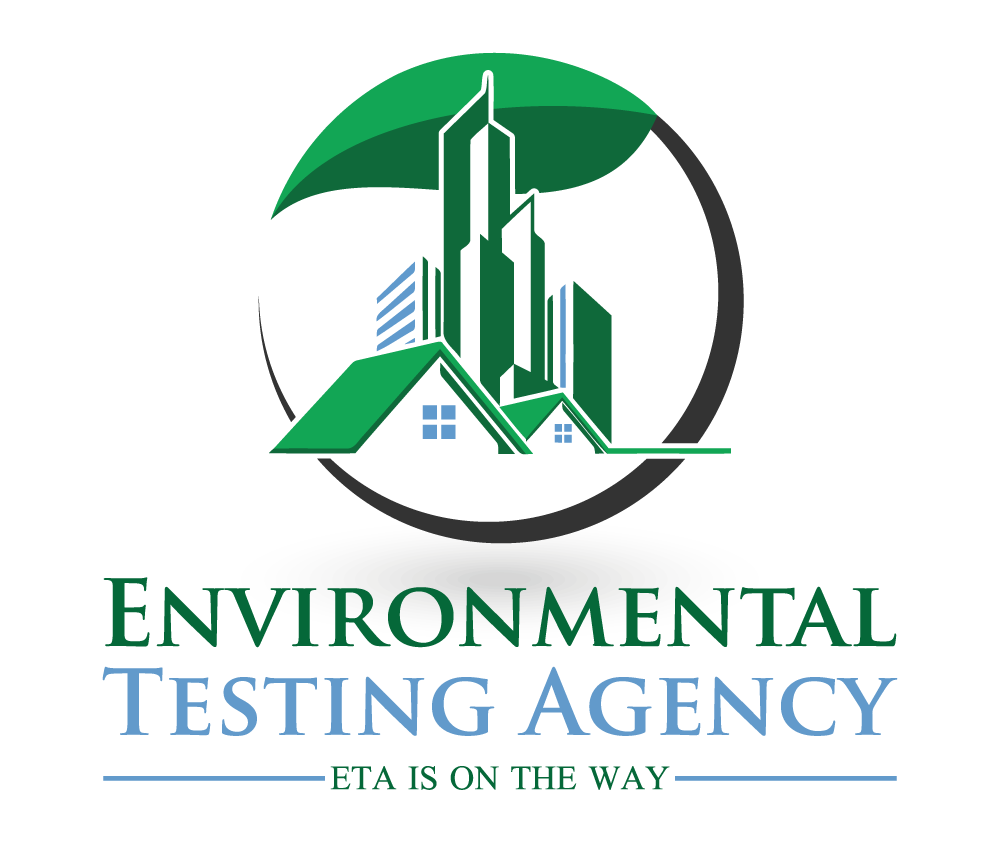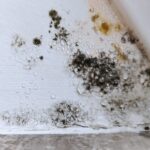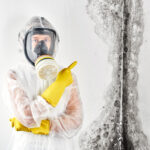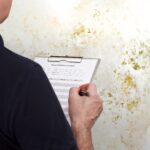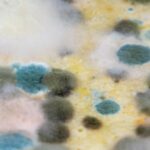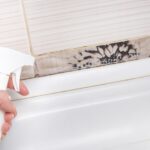Mold vs Mildew: Differences and How to Deal With Them
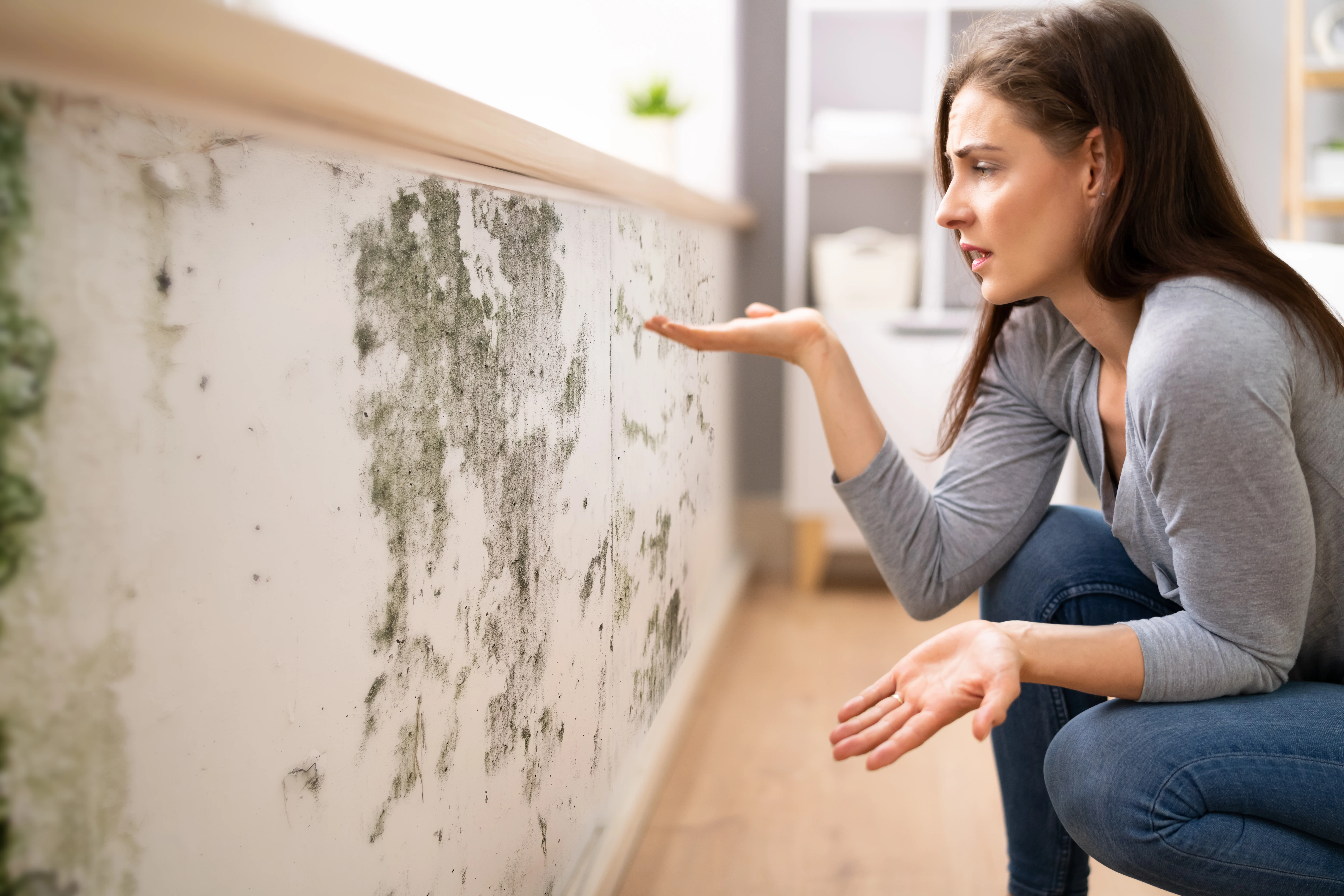
If you’ve ever noticed dark spots in your bathroom or a musty smell in your basement, there’s a good chance you’re dealing with mold vs mildew. They both thrive in damp places and can spread fast if ignored. While they might seem the same, they look different, affect your home in different ways, and require different cleaning methods.
Knowing the difference can help protect your home and health. Mold can cause serious damage and even health problems, while mildew is usually easier to clean but still a sign of too much moisture. Once you know what you’re dealing with, you can get rid of it the right way and keep it from coming back.
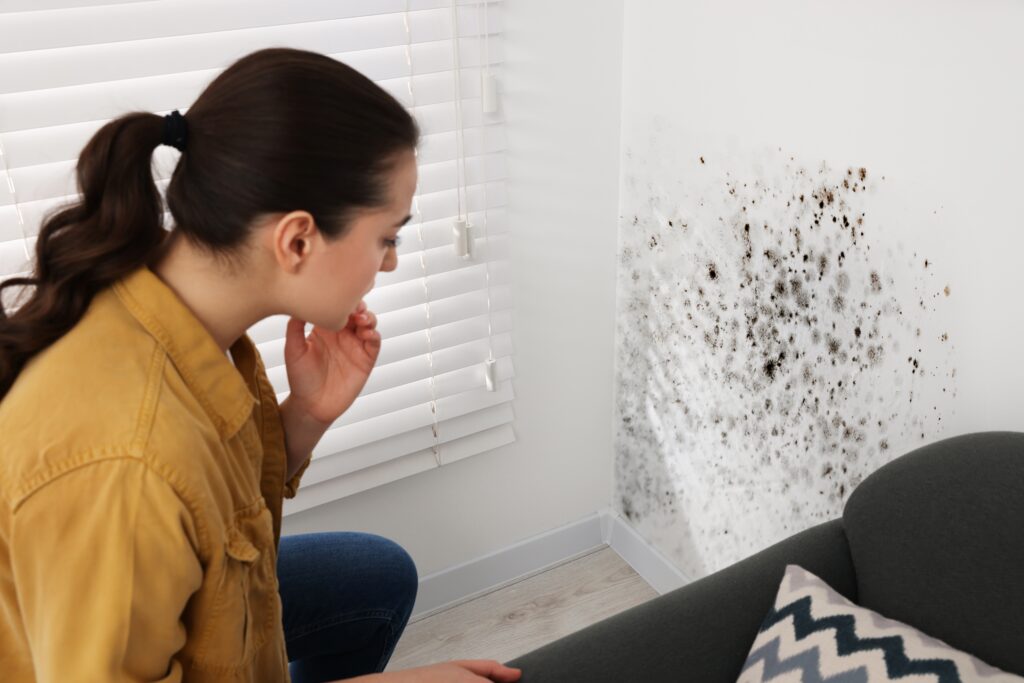
What Is Mold?
Mold is a type of fungus that grows in damp places. It spreads through tiny spores in the air and can quickly take over when there’s moisture. Unlike mildew, which stays on the surface, mold can grow deep into walls, floors, and other materials, making it harder to get rid of.
Common Types of Mold and Where It Grows
Mold comes in different forms, but some types are more common in homes than others:
- Black mold (Stachybotrys chartarum): Dark green or black. It usually shows up in places with long-term water damage like basements and bathrooms.
- Penicillium: Blue or green in color. This mold grows on damp materials like wallpaper, carpets, and insulation.
- Aspergillus: Found indoors in many colors. It often grows on food, air conditioning systems, and damp walls.
Mold thrives in areas with too much moisture, such as:
- Bathrooms and kitchens
- Basements and crawl spaces
- Under sinks and around pipes
- Any place with leaks or past flooding
Health Risks and Structural Damage
Mold is not just an ugly stain on your walls. It can cause serious problems. Breathing in mold spores can trigger allergies, worsen asthma, and cause other health issues, especially for people with weak immune systems.
It is also bad news for your home. Mold can eat away at wood, drywall, and insulation, leading to expensive repairs. The longer it is ignored, the worse the damage gets. That is why it is important to deal with mold as soon as you see it.
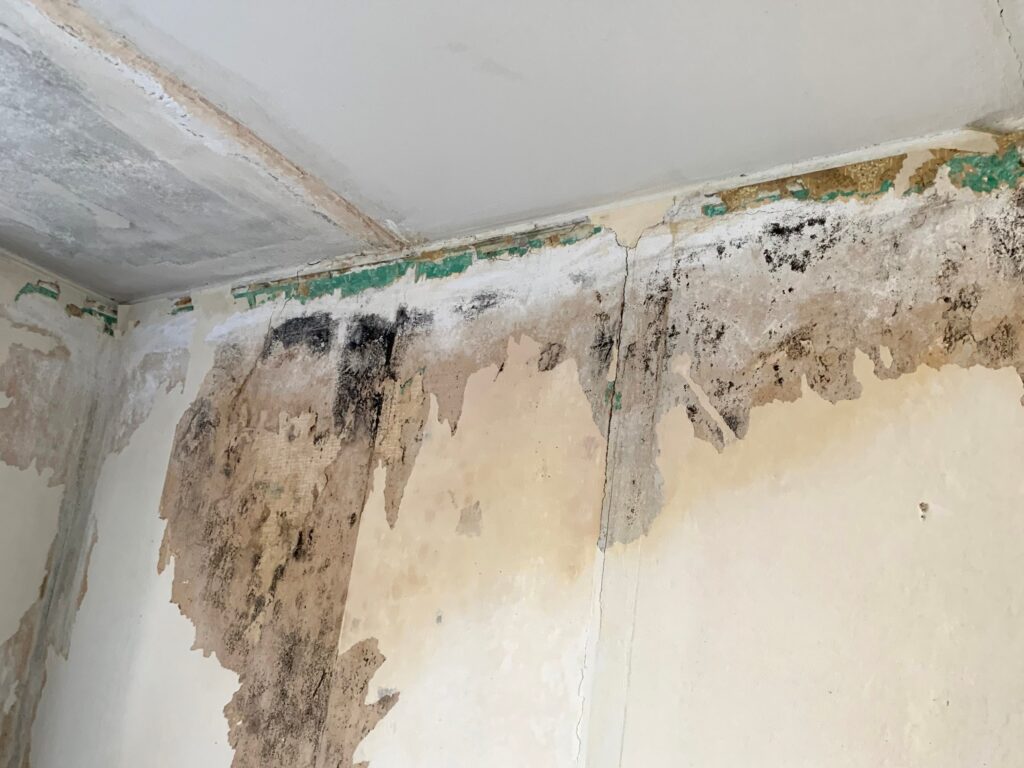
What Is Mildew?
Mildew is a type of fungus that grows in damp places, kind of like mold. The good news is mildew is usually easier to clean and doesn’t cause as much damage. It stays on the surface instead of spreading deep inside. It often looks like white, gray, or yellow spots that can turn brown or black if ignored. It also has a powdery or fuzzy texture and gives off a musty smell.
Common Types of Mildew and Where It Grows
Mildew loves warm, humid areas with little airflow. You’ll often find it in places like:
- Bathrooms – On walls, ceilings, shower curtains, and tile grout
- Windowsills and wood – Especially if they’re damp
- Fabrics and paper – Like upholstery, clothing, and books
- Plants – Some types, like powdery mildew, often show up on leaves
There are two common types:
- Powdery mildew – White or gray and powdery, mostly seen on plants but also on indoor surfaces
- Downy mildew – Starts yellow and turns brown over time, often found on damp fabrics and walls
Health Risks and Surface Damage
Mildew isn’t as dangerous as mold, but it’s still not great to have around. Breathing in mildew spores can trigger allergies or mild breathing issues, especially if you’re sensitive to it. It also makes rooms smell musty and feel unclean.
Since mildew stays on the surface, it won’t ruin structures like mold can. But it can stain materials and weaken fabrics over time. If left alone, mildew can spread and turn into a bigger mold problem. The best way to keep it from coming back is to clean it regularly and reduce moisture in your home.
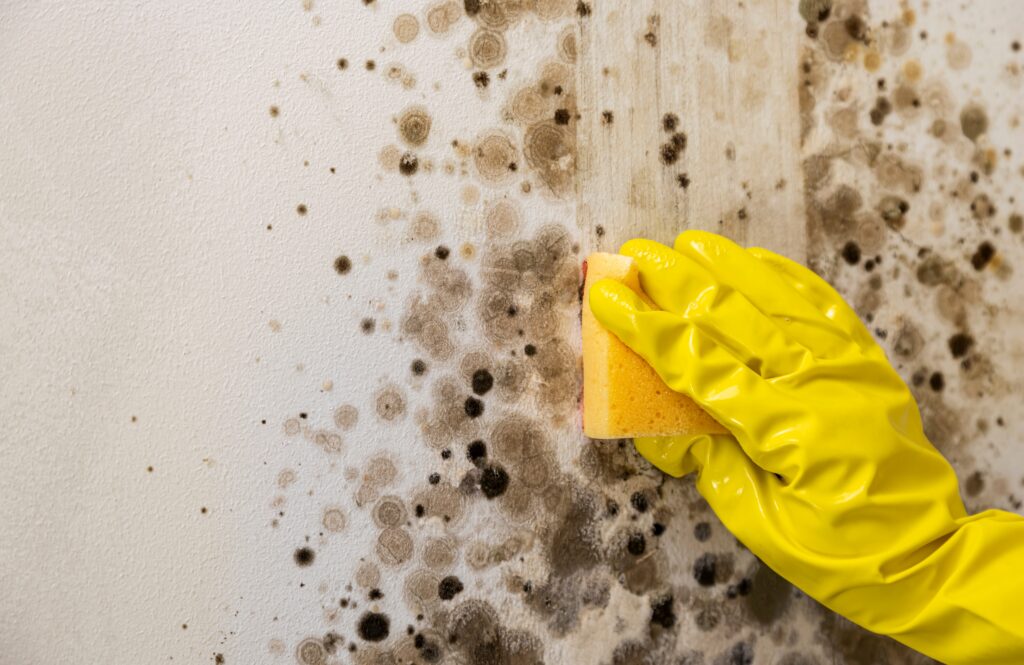
Mold vs Mildew – How to Tell the Difference
Mold and mildew may seem alike at first, but there are a few things that set them apart. Knowing these differences can help you deal with them the right way.
Appearance, Texture, and Color
- Mold: Mold can appear in many colors, like black, green, yellow, or even orange. It often looks fuzzy or slimy and tends to grow in irregular patches. You’ll usually see dark spots when it appears, and it can grow both inside and outside your home.
- Mildew: Mildew usually starts as a white, gray, or yellowish powdery or fuzzy layer. It might turn brown or black as it grows, but it tends to stay more uniform in texture than mold. Mildew also grows in flatter, smaller patches.
Where They Grow
- Mold: Mold loves damp, poorly ventilated areas. It tends to grow in hidden spaces, like behind walls, under carpets, and in basements. Mold feeds on materials like wood, drywall, and fabrics. It can even grow on food if the conditions are right.
- Mildew: Mildew prefers humid spaces, but it doesn’t need as much moisture as mold does. It’s often found in bathrooms, on things like shower curtains, tile grout, and walls. You might also see it on fabrics or furniture.
Effects on Health and Property
- Mold: Mold can be dangerous, especially for people with breathing problems or weakened immune systems. It can cause allergies, asthma, and even infections. Mold also damages materials like wood and drywall, weakening your home’s structure. If not dealt with, it can lead to expensive repairs.
- Mildew: Mildew isn’t as harmful as mold, but it can still cause health issues like respiratory irritation, allergies, and coughing. Since it usually grows on surfaces, it doesn’t cause as much damage. However, if left untreated, it can spread and turn into mold, which can be much worse.
How to Prevent Mold and Mildew
The best way to keep your home free from mold and mildew is by controlling moisture. These fungi love damp areas, so keeping moisture under control is key. Here are some easy tips to help keep your home dry and mold free:
Moisture Control and Ventilation Tips
- Keep humidity levels in check: Mold and mildew thrive in humid air. Try to keep indoor humidity between 30% and 50%. A dehumidifier can help, especially in spaces like basements and bathrooms.
- Use exhaust fans: Make sure your bathroom and kitchen are well-ventilated. Exhaust fans help get rid of moisture after you shower or cook.
- Open windows and doors: On dry days, open your windows to let fresh air flow through. This helps keep rooms like the kitchen and bathroom from feeling too damp.
- Fix leaks quickly: Leaks, whether from a roof, broken pipe, or window, should be fixed right away. Even small leaks can cause enough moisture for mold and mildew to grow.
- Ensure proper drainage: Make sure the ground around your house slopes away from the foundation to stop water from pooling near the walls or basement.
Cleaning and Maintenance Tips
- Clean and dry surfaces often: Mold and mildew love dirt and moisture. Wipe down bathroom and kitchen surfaces regularly, paying special attention to grout, tile, and shower curtains.
- Wash fabrics regularly: Damp towels, shower curtains, and bath mats are perfect places for mildew to grow. Wash them often and dry them right away if they get damp.
- Clean gutters: Clogged gutters can cause water to overflow and seep into your foundation. Clean them at least twice a year to prevent water damage.
- Use mold-resistant products: If you’re making repairs or renovations, choose mold-resistant paints, drywall, and insulation to help prevent mold from forming in the future.
How to Test for Mold and Mildew in Your Home
If you suspect mold or mildew in your home, testing is the best way to be sure. While mold is often visible, it can sometimes hide behind walls or floors. Here’s a simple guide to help you test for mold and mildew and catch it early.
Signs You Might Need to Test
- Musty Smell: If you notice a damp, musty smell in certain parts of your home (even if you don’t see mold), it could mean mold or mildew is nearby.
- Visible Growth: If you see dark spots, fuzzy patches, or discoloration on walls, ceilings, or fabrics, it’s time to test.
- Health Symptoms: Persistent coughing, sneezing, or allergy-like symptoms in specific rooms could point to mold exposure.
- Water Damage: If your home has had flooding, leaking pipes, or roof damage, it’s smart to test those areas for mold.
DIY Testing Kits
Mold testing kits are available at most hardware stores or online. These kits usually come with petri dishes or swabs to collect samples from areas where you suspect mold. Some kits identify the type of mold, while others just tell you if it’s present. Here’s how to use a DIY kit:
- Follow Instructions: Each kit comes with step-by-step instructions, so be sure to read them carefully to get accurate results.
- Collect Samples: Use the swabs or petri dishes to take samples from places where you think mold or mildew is growing.
- Wait for Results: After you collect the samples, you’ll either send them to a lab (if needed) or wait for results in a few days, depending on the kit.
Professional Mold Testing
If you can’t find the mold yourself or it covers a large area, it might be time to call a professional. Mold inspectors have the tools and knowledge to test the air and check hidden areas. They can give you a detailed report on your home’s mold situation.
Here’s what professional mold testing usually involves:
- Air Sampling: Inspectors take air samples from different rooms to check for mold spores in the air.
- Surface Sampling: They may swab surfaces to see if mold is growing there.
- Thermal Imaging: Infrared cameras help inspectors find hidden moisture or mold behind walls.
When to Test for Mildew
Mildew is easier to spot since it grows on the surface, so you typically don’t need a testing kit. If you see it, you can clean it! But if the mildew issue is bigger or spread out, a professional mold inspection can help check if it’s reached harder-to-see areas.
Testing early, whether on your own or with professional help, can help you address mold and mildew issues before they become bigger problems, protecting your health and your home.
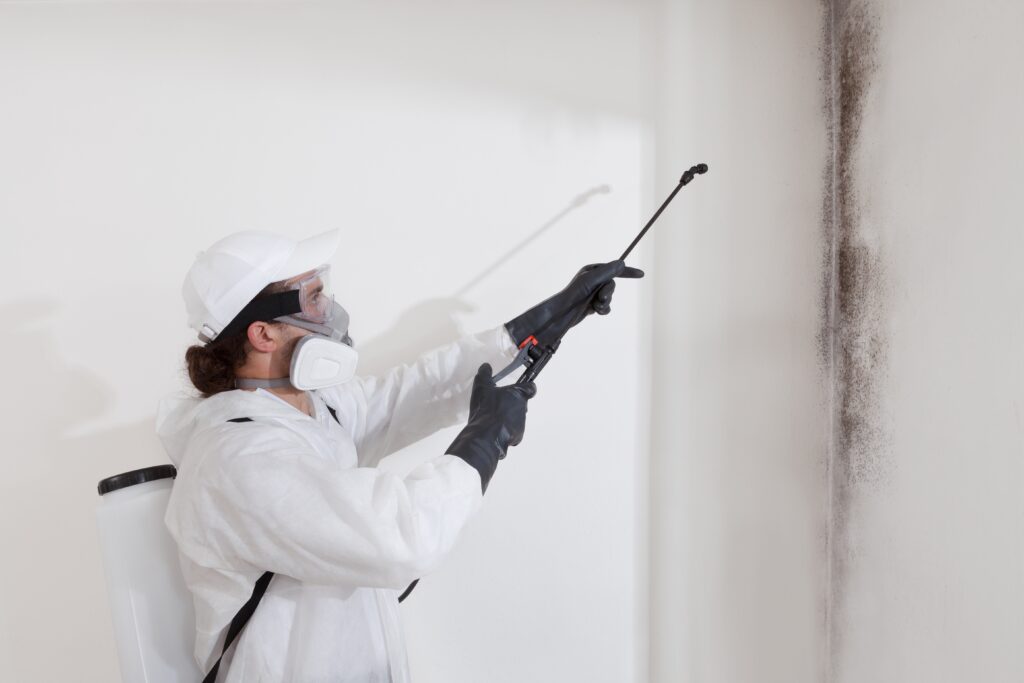
How to Clean Mold and Mildew
Cleaning mold and mildew might seem like a big task, but it’s definitely something you can handle. Whether you’ve got a small patch in the bathroom or a bigger mold problem, here’s a simple guide to help you clean both mold and mildew effectively.
How to Clean Mildew
Mildew is usually easier to remove because it only affects the surface. Here’s how you can clean it up:
What You’ll Need:
- White vinegar or hydrogen peroxide
- Baking soda (optional)
- Scrub brush or sponge
- Gloves and a mask (for your safety)
- A spray bottle
Steps:
- Spray the Area:
Spray the affected area with white vinegar or hydrogen peroxide. These natural cleaners are great at killing mildew without using harsh chemicals. If you prefer, you can mix equal parts water and vinegar in a spray bottle. - Let It Sit:
Let the solution sit for about 10-15 minutes. This gives it time to work and makes scrubbing the mildew easier. - Scrub the Surface:
Use a scrub brush or sponge to clean off the mildew. For tougher spots, you can sprinkle a bit of baking soda on the sponge to give it extra scrubbing power. - Rinse and Dry:
Rinse the area with clean water and dry it with a towel. Be sure the surface is completely dry to stop mildew from coming back.
How to Clean Mold
Mold is a bit more stubborn, but it can be cleaned with a little extra care. Here’s how to do it safely:
What You’ll Need:
- Bleach (for hard surfaces) or vinegar (for soft surfaces)
- Scrub brush or sponge
- Protective gloves, mask, and goggles
- A bucket with warm water
- A fan or dehumidifier to help dry the area
Steps:
- Prepare the Area:
Make sure the room is well-ventilated. Open windows, doors, or use a fan to keep air flowing. Always wear gloves, a mask, and goggles to protect yourself from mold spores. - Clean Hard Surfaces:
For mold on non-porous surfaces like tile or glass, mix one cup of bleach with one gallon of water. Apply the solution to the moldy area and let it sit for about 10 minutes. Then scrub the mold away with a brush or sponge. - Clean Soft Surfaces:
If the mold is on porous materials like wood, drywall, or fabric, avoid bleach since it won’t work well on these surfaces. Instead, use a mixture of white vinegar and water or hydrogen peroxide. Let it sit for about 15 minutes before scrubbing. - Rinse and Dry:
Once you’ve cleaned the area, rinse it with water and wipe it down with a dry cloth. Make sure the area dries completely to prevent mold from returning. You can use a dehumidifier or fan to speed up the drying process.
Mold vs Mildew: How to Keep Your Home Safe and Healthy
Mold and mildew can look similar, but knowing the difference is important to keep your home safe and healthy. Whether it’s the musty smell of mildew in your bathroom or mold hiding behind the walls, taking care of these problems early can save you time, money, and prevent health issues.
The best way to keep both away is by controlling moisture. Keep your home well-ventilated, fix leaks quickly, and clean regularly to prevent mold and mildew from growing. If you do find them, make sure to clean properly or call a professional if needed.
Taking these simple steps now will help you create a cleaner and healthier home for you and your family.
FAQs
What’s the difference between mold and mildew?
Mold is often fuzzy or slimy and can be black, green, or brown. It grows deeper into surfaces and can cause more serious damage. Mildew, on the other hand, is powdery and usually white or yellow. It stays on the surface and is easier to clean, but it’s still important to get rid of it before it becomes a bigger problem.
Can I clean mold or mildew myself?
Yes, you can clean small areas of mold and mildew yourself. For mildew, try using vinegar or hydrogen peroxide. For mold, bleach works well on hard surfaces, and vinegar is a good option for things like wood or fabric. If the mold is widespread or in hard-to-reach places, it’s safer to call in a professional.
How can I stop mold and mildew from coming back?
Preventing mold and mildew is all about controlling moisture. Keep your home well-ventilated, fix leaks quickly, and use dehumidifiers in places that tend to get damp. Regularly clean areas like bathrooms and kitchens and make sure surfaces stay dry.
Can mold and mildew affect my health?
Yes, mold and mildew can cause allergies, breathing problems, and even make asthma worse. Some types, like black mold, are more harmful and can lead to serious health issues. If you’re noticing symptoms like coughing, sneezing, or skin irritation, it’s a good idea to take care of any mold or mildew issues.
How do I know if I have hidden mold?
If you smell something musty or if you’re experiencing unexplained health issues, mold might be hiding in places like behind walls, under floors, or in vents. You can use a mold testing kit or call a professional to check the air and surfaces for mold.
Can mildew harm my home’s structure?
Mildew doesn’t usually cause as much damage as mold, but it can still affect wood, fabric, and paint if you leave it untreated. Over time, mildew can lead to staining and decay, so it’s important to clean it up as soon as you spot it.
Can mold-resistant products help prevent mold and mildew?
Yes, using mold-resistant products like paint, drywall, and insulation can help stop mold from growing, especially in damp areas like bathrooms or basements. These products create a barrier that makes it harder for mold to take hold.
Can mold grow in any room of my house?
Mold thrives in places with high moisture, so you’ll usually find it in bathrooms, kitchens, basements, and attics. But if you have leaks or damp areas in other rooms, mold can grow anywhere in your home.
Does mold or mildew damage furniture?
Yes, both mold and mildew can harm your furniture. Mold can weaken wooden furniture, while mildew can cause stains or bad smells on fabrics and upholstery. Regularly cleaning and drying your furniture can help prevent this.
What should I do if I find black mold?
Black mold can be dangerous, so take extra care when dealing with it. Make sure to wear gloves, a mask, and goggles when cleaning it. If the infestation is large or in hard-to-reach places, it’s best to call a mold expert to make sure it’s properly removed and your home stays safe.


